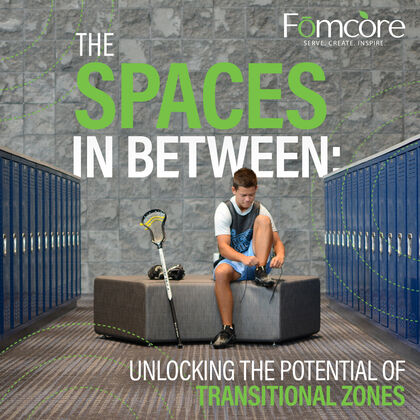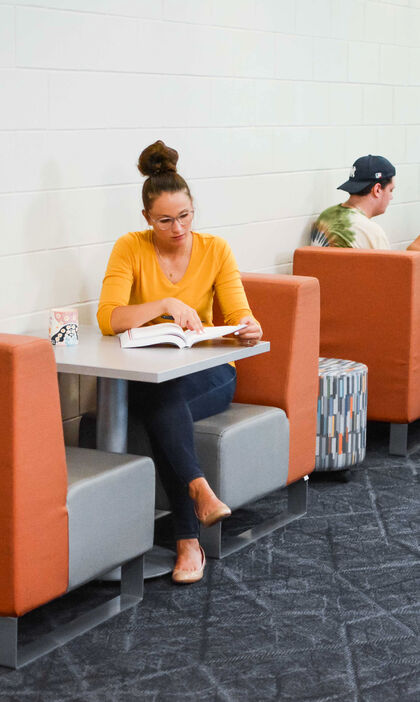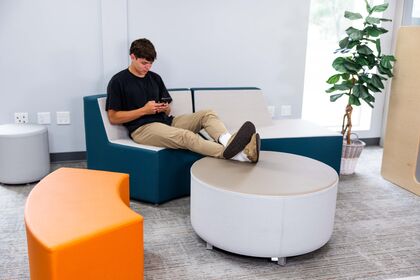Loading...

The Spaces in Between: Unlocking the Power of Transitional Zones
In educational environments, significant attention is traditionally given to primary learning areas such as classrooms and libraries. Yet, transitional spaces—corridors, hallways, staircases—hold untapped potential that can enhance the educational landscape. These zones, often underutilized, can be transformed into dynamic areas that foster informal learning and social interactions.
Why are Transitional Spaces important?
Transitional spaces are the connective tissue of educational buildings, guiding students and faculty from one location to another. These areas, beyond facilitating movement, can also serve as dynamic informal learning environments. When thoughtfully designed, they can host unplanned interactions and educational activities. Imagine a hallway outfitted with whiteboards and seating areas where students spontaneously meet to review materials, or a stair landing with interactive displays for peer-led discussions on recent lectures. These adaptations enrich the social and intellectual life of a school, turning every space into a potential learning zone.
Strategies for Enhancing Transitional Zones
1. Design for Versatility: Installing modular furniture and mobile workstations can transform hallways into flexible learning areas suitable for individual study or group projects. The adaptability of these spaces should be emphasized, allowing them to be easily reconfigured based on current educational needs or specific events.
2. Integrate Interactive Elements: Educational technology, such as touchscreens and QR code projects, can be embedded within these areas to create interactive learning opportunities. This integration can extend digital learning pathways outside of the traditional classroom and engage students in a continuous educational experience as they move through different areas of the school.

3. Employ Biophilic Design Principles: Incorporating elements of nature into building design has been shown to reduce stress and improve cognitive outcomes. Transitional spaces are ideal for large-scale biophilic interventions such as living walls, indoor gardens, or skylights that increase natural light. Such design choices not only enhance the aesthetic quality of these spaces but also contribute to a healthier indoor environment conducive to learning and well-being.
4. Focus on Acoustic Design: Effective management of acoustics can drastically alter the usability of transitional spaces. Sound-modulating design elements such as acoustic panels or varied flooring materials can minimize noise pollution from foot traffic, making these areas more suitable for conversation and collaboration without disrupting adjacent classrooms.
5. Curate Visual and Material Continuity: Ensuring a seamless visual transition between different areas of the school can make transitional spaces feel more integral to the learning environment. Consistent use of color, texture, and materials can create a narrative flow, guiding students both physically and mentally from one area to another, reinforcing the interconnectedness of their learning experiences.

Recognizing and optimizing transitional spaces within educational settings provides a profound opportunity to enrich student learning and interaction. This holistic approach ensures that learning doesn't just happen within the confines of traditional classrooms but permeates every corner of the educational landscape. While there is no one-size-fits-all solution, these strategies provide a strong starting point for understanding the importance of transitional spaces and utilizing them to their full potential. By doing so, schools can create more dynamic, inclusive environments that support students in every aspect of their educational journey.
References:
Osterman, K. F. (2000). Students' need for belonging in the school community. Review of Educational Research, 70(3), 323–367.
Kellert, S. R., Heerwagen, J. H., & Mador, M. L. (2008). Biophilic Design: The Theory, Science, and Practice of Bringing Buildings to Life. Wiley.
Oblinger, D. G. (2006). Learning Spaces. EDUCAUSE.
Steelcase. (2020). Designing for movement and connection: Rethinking spaces for active learning.
Gensler Research Institute. (2017). The student experience: How campus design influences engagement and learning.
International WELL Building Institute. (2018). WELL Building Standard v2.
Barrett, P., Zhang, Y., Moffat, J., & Kobbacy, K. (2013). A holistic, multi-level analysis identifying the impact of classroom design on pupils’ learning. Building and Environment, 59, 678–689.